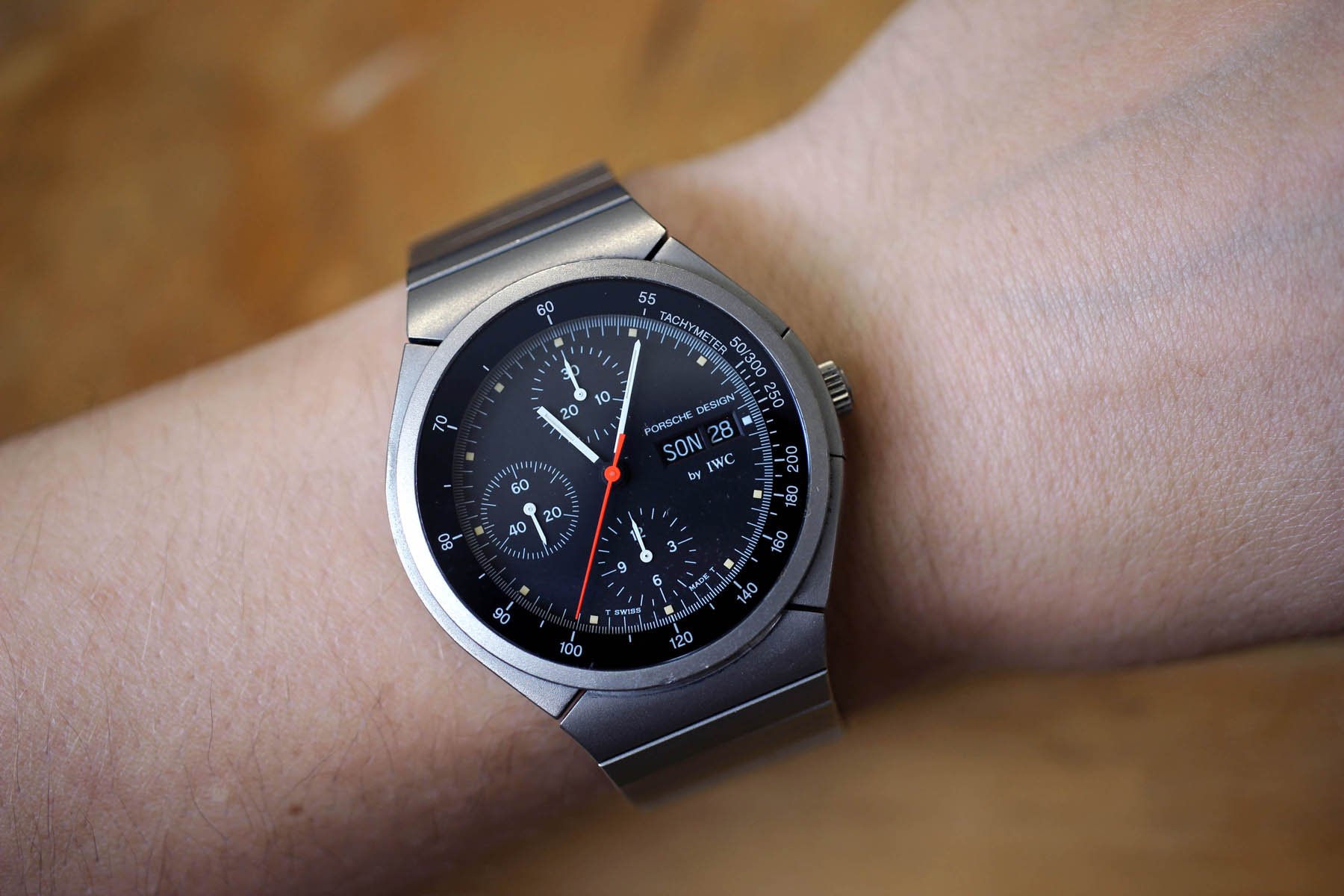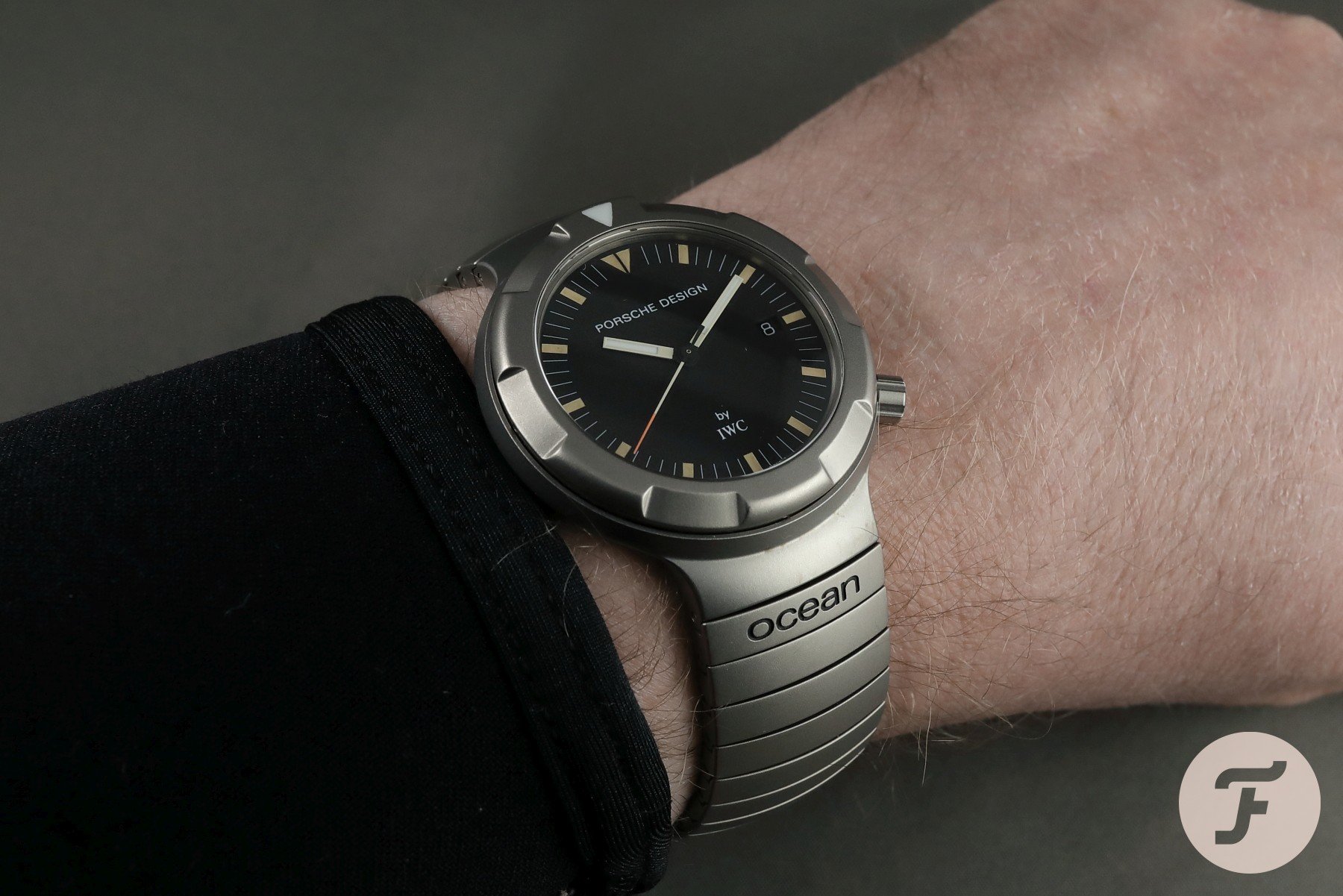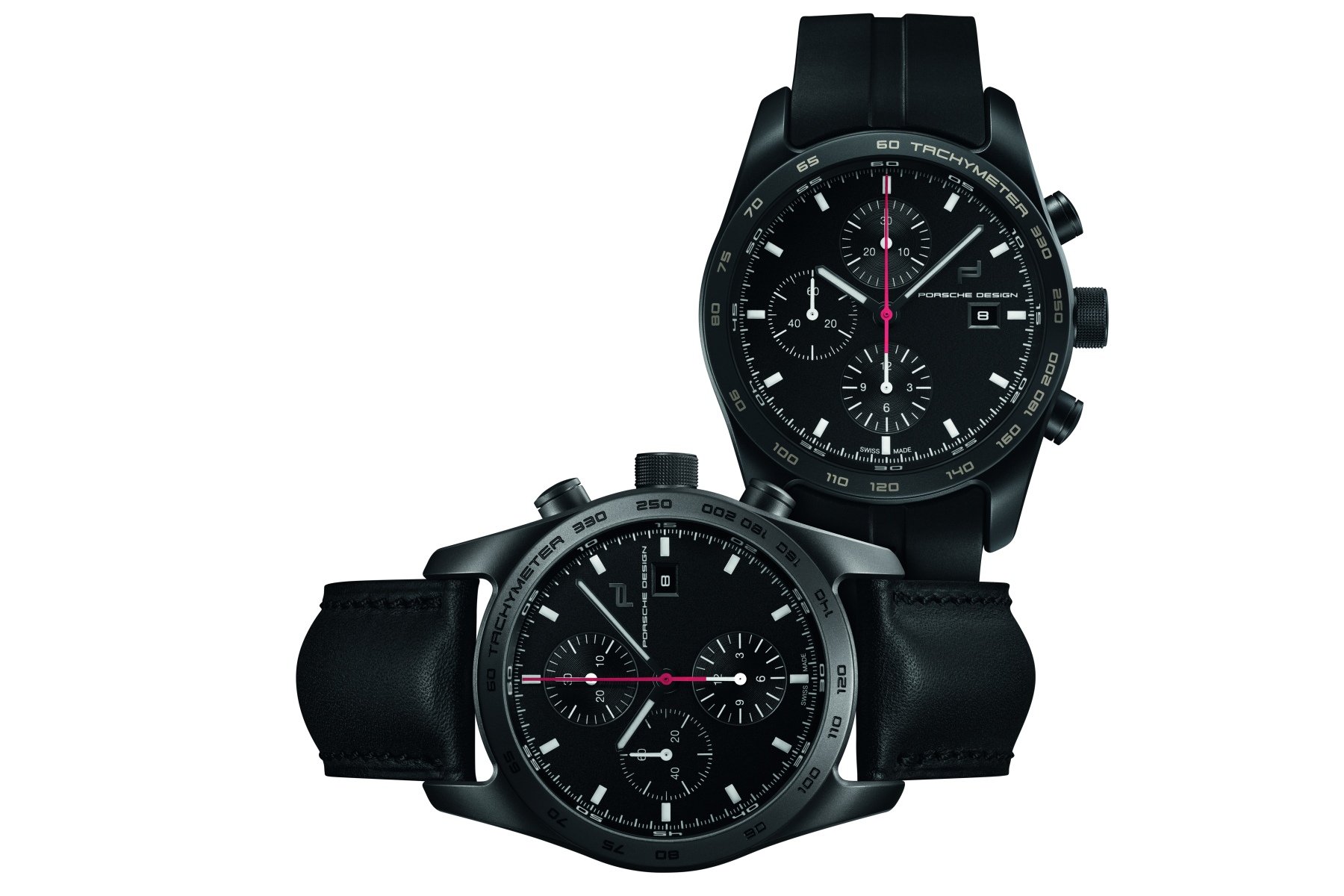A Brief History Of Time: Porsche Design’s Complete Brand History
The two brands Porsche Design and Porsche are often assumed to be one and the same. But only recently, the Design Studio became part of the car manufacturer. Since then, the ties between Porsche Design watches and Porsche cars have become even stronger. Although there have always been links between the two companies, Porsche Design has created an impressive portfolio of non-car-related products — including watches. Let’s go back and explore the history of Porsche Design’s watches.
The history of Porsche Design starts in 1972. Ferdinand Alexander Porsche, generally known as F. A. Porsche (but also as “Butzi”) founded the Porsche Design Studio in Stuttgart, Germany. F. A. Porsche had been responsible for industrial design in his family’s car manufacturing company since 1962. His most famous work is the Porsche 911, which was brought to the market in 1964 and which still has an iconic status today. But, when the owners of the Porsche company had decided to remove all family members from management positions within the company due to ongoing disputes, F. A. Porsche needed a new job. Founding his own company appeared to be a feasible approach.
Chronograph 1
One of the first products of the Porsche Design Studio already was a watch: the Chronograph 1, which was launched in 1972 (but only hit the market in 1973). This watch is the first with a black PVD case, bracelet, and a matching black dial. F. A. Porsche chose this “colorless” design foundation in order to eliminate any reflections. In combination with the gauge-like layout of the sub-dials, this watch’s design perfectly imitates the look of the Porsche 911’s dashboard.
Watch manufacturer Orfina from Grenchen in Switzerland built the Chronograph 1. First editions were equipped with the then brand new Valjoux 7750 caliber that later became the ETA 7750. But shortly after, in 1975, the production of the 7750 was stopped. Therefore a new movement had to be used, and F. A. Porsche opted for the Lemania 5100 with a central minute counter.
Unfortunately, the early version’s black PVD coating on a steel surface was not very durable. For this reason, most Porsche Design Chronograph 1 pieces you find today either display a pretty worn surface or have been re-coated to an often unsatisfactory standard. If you want to know more about this particular watch, Wei Koh has written an article worth reading on the Porsche Design Chronograph 1 for Revolution.
Relocation to Austria
In 1974 the Porsche Design Studio moved to Zell am See in Austria, where it is still located today. F. A. Porsche’s family has their ancestral seat in Zell am See. He had grown up there, and this move was somewhat of a homecoming for him.
F. A. Porsche and his team were impressively active in product design, transportation design, and even architectural design. In the early days, a tobacco pipe with cooling fins, designed by F. A. Porsche was mentioned as a brand highlight. Later the Porsche Design Studio went on to design a cable car that is still in operation in Zell am See.
In 2015 the Porsche Design Studio was renamed Studio F. A. Porsche in appreciation of its founder, who had died in 2012. If you take a look at the website of Studio F. A. Porsche, you will be overwhelmed by the vast selection of references to projects it carried out for its customers. Until today Studio F. A. Porsche is responsible for the design of all Porsche Design watches.
The collaboration with IWC
In 1978 Porsche Design entered a collaboration with the well-known Swiss brand IWC. This collaboration can be considered quite beneficial for both brands.
The Compass Watch
The first outcome of this partnership was the Compass Watch which appeared on the market that same year. The upper part of the case can be folded up to reveal a compass in the case’s lower half. A mirror at the bottom of the upper half acts as a bearing aid for this compass. The first version of the compass watch had an aluminum case with a black coating and a bracelet made of carbon fiber, and the caliber in this watch is IWC’s caliber 375, a highly modified version of the ETA 2892. This caliber is non-magnetic to not interfere with the compass, and it is the first ETA-based caliber used by IWC. From 1991, IWC offered the Compass Watch in a titanium case with a titanium bracelet.
The Titanium Chronograph
In 1980 Porsche Design by IWC presented the most famous watch from the cooperation of these companies: the Titanium Chronograph. Making the material part of the name indicates its importance for the brand. Titanium had previously seldom been used for watches. This metal had an outstanding reputation for high-tech applications in the aerospace, automotive, and rail industry. Up until today, titanium is Porsche Design’s preferred material for watch cases. Alongside the then unusual material, which also was used for the integrated bracelet, the dashboard design of the dial and the integrated chronograph pushers are the remarkable characteristics of this watch. The dial is reminiscent of the one found in the Chronograph 1. The pushers are so perfectly integrated into the case’s shape that I find it hard to remember any other watch that could rival this design. You can find Tomas’ review of the Titanium Chronograph here.
The Ocean 2000
1982 was the year that saw the Ocean 2000 surfacing (pun intended). This dive watch, also made of titanium, was the first watch with a water resistance of 2000 meters. It has an unusual and wonderful integrated bracelet. I have expressed my love for this watch in an extensive article so that I don’t dwell on it here any further. A smaller version of it was the Ocean 500 with its respective 500m depth rating.
Other better-known watches that emanated from Porsche Design’s cooperation with IWC include the Travel Watch and the Ultra Sportivo. The brand’s collaboration with IWC ended in 1997.
Becoming independent — Eterna
As the partnership with IWC was coming to an end, Porsche Design began looking for a new manufacturer for its watches. To solve this problem, F. A. Porsche acquired Eterna in 1995. Under this new ownership, Eterna began to build Porsche Design watches that are strongly reminiscent of the designs which had been previously brought to life by IWC. Later on, the watches from Porsche Design by Eterna received a more independent look. A complete collection named Flat Six, which refers to Porsche’s six-cylinder engine, dominated the brand’s offering for some years.
The Indicator
2004 marks a milestone for Eterna and Porsche Design in the form of the Indicator watch. The Indicator was the first mechanical chronograph with a digital display of elapsed hours and minutes. Elapsed seconds are indicated analogically by a central hand. The watch also provides a unique power reserve indicator that changes from green to red as the remaining power decreases. The digital display of this rather large titanium watch (48mm diameter × 19mm height) required a separate gear train and barrel. In total, the movement consists of more than 800 parts. The original price of the Indicator lay way beyond €100,000. The brand also offered a Rattrapante (split-second chronograph) with a look quite similar to the Indicator.
The Worldtimer
In 2007 Porsche Design presented the Worldtimer that offers the digital display of a second time zone and an intuitive way of adjusting it. The dial layout and the skeleton lugs give this watch a remarkably futuristic look. Unfortunately, with a price tag of over €10,000 this watch was also rather expensive.
The Diver
The Porsche Design Diver, released in 2010, has a very particular design. The actual case of the watch is kept in a frame from which it can be folded up, similar to the Compass Watch. Only in this position, you can operate the diving bezel and the winding crown. This design offers an intricate but safe solution to prevent accidental readjusting of the dive time indication.
Reeditions
In 2010 and 2011, Porsche Design presented recreations of the Chronograph 1, the Titanium Chronograph, and the Compass Watch. In 2012 Porsche Design presented the P’6500 Heritage Collection consisting of these three watches in a limited set of 100 pieces for the 40th anniversary of the brand. 2011 marked the end of the liaison between Porsche Design and Eterna. Eterna was sold to the Chinese Haidian Group (today named Citychamp Watch & Jewellery Group, which also owns Corum).
Building watches under its own name — Porsche Design Timepieces
In 2014 Porsche Design finally took the production of watches into their own hands by founding the Porsche Design Timepieces AG with headquarters in Solothurn, Switzerland.
Timepiece No. 1
The first two watches the new watch manufacturer presented in 2014 were the Timepiece No. 1 and the Chronograph Titanium. These were inspired by the Chronograph 1 and the Titanium Chronograph — the best known Porsche Design watches. Although these new watches look rather different, their design and their names reference their classic precursors. In contrast to those iconic ancestors, the new watches came on straps instead of bracelets. It was a limited run of 500 pieces of each model.
Chronotimer Collection
The following year the newly reinvented Porsche Design brand presented a new family of chronographs: the Chronotimer Collection. Their design digresses from the classic design even more but makes a subtle yet unmistakable reference to Porsche Design’s design language. In addition to the traditional colors black and natural titanium, this collection included watches with a blue dial and a case of polished titanium, a golden bezel, a carbon dial, and even a white dial. Additionally, the brand offered bracelets with black coating and in natural titanium again.
1919 Collection
Not in 1919 but in 2016, Porsche Design presented an entirely new family of watches: the 1919 Collection. 1919 refers to the year the Bauhaus art school was founded. That famous and significantly influential educational institution that has a lasting impact on architecture, art, and design also clearly affected Porsche Design’s work.
The most distinctive characteristic of these watches is the skeleton lugs we saw first at the Worldtimer in 2007. This family of watches comprises chronographs (1919 Chronotimer), GMT watches (1919 Globetimer), and time and date watches (1919 Datetimer Eternity). Probably most impressive because of the purity of its design is the Datetimer Eternity. At the same time, it is bold as well as elegant. The most unusual Datetimer Eternity model has a gray-green dial, and the titanium case has a surface treatment that makes it appear almost bronze. This watch is Porsche Design’s only timepiece with an alligator strap.
For a detailed exploration of one of these watches, check my review of the 1919 Chronotimer Flyback Brown & Leather.
Porsche Design becomes a part of Porsche
Many people could be forgiven for having thought that Porsche Design would be the same company as the famous luxury car manufacturer, Porsche. But, even though its founder F. A. Porsche was a member of the Porsche family and had started his career as a designer of Porsche cars, Porsche Design was always a separate company. This changed in 2017 when Porsche AG acquired the remaining 35% of the Porsche Design Group. The remaining 65% of Porsche Design had already become part of Porsche AG in 2003 when F. A. Porsche retired from an active position in the company. The strategy behind this acquisition aims to use Porsche Design’s lifestyle products, including the watches, to attract younger customers who will hopefully become future Porsche vehicle owners. For this reason, the Porsche Design watches have become more closely related to the cars of the brand.
Monobloc Actuator
The Monobloc Actuator is Porsche Design’s take from 2017 to revive and even carry further the idea of chronograph pushers fully integrated into a watch’s case like in the Titanium Chronograph from 1980. The Monobloc Actuator’s design is bold. Its dimensions of 45.5mm diameter at 15.6mm height are impressive. However, as this watch’s case also is made of titanium, it isn’t excessively heavy.
The right side of the case is clearly thicker than the left one. In fact, the entire right side of the case is a big rocker that pivots around the 3 o’clock position. Pressing this rocker above or below the crown executes the chronograph functions. When you do this, it looks as if you would put the structure of the case at risk. But, amazingly, this mechanism is so robust and well-integrated that you can even operate the chronograph this way at the limit of the watch’s water resistance at a depth of 100 meters.
WERK 01.200
After selling Eterna, Porsche Design depended on standard watch movements again. When more and more watch manufacturers rose to the Swatch Group’s challenge and presented their own movements, Porsche Design had to act. Porsche Design Timepieces completed its status as a watch manufacturer by developing its own caliber. Following its tradition, the brand decided on a chronograph movement. But they extended their legacy by going for a flyback chronograph. Concepto Watch Factory in La Chaux-de-Fonds was chosen as a partner to build this new movement. The gear train and basic layout were adopted from the ETA 7750. In addition to a flyback function, the new caliber also received newly designed bridges and a matching main plate with a black coating and a decoration featuring the Porsche Design logo. The name of this movement is WERK 01.200, it is COSC certified, and was introduced by the brand in 2018.
Custom-built Timepieces
I repeatedly mentioned the growing connection between Porsche Design watches and Porsche cars. The Custom-built Timepieces, introduced in 2020, mark the current culmination of this connection. Many car manufacturers offer online configurators to customize the look and the amenities of your future car. Very few watch manufacturers have offered their customers to configure their watches in the past. Porsche Design is taking this approach to an entirely new level. You can customize your Porsche Design Custom-built Timepiece to an extent that simply wasn’t possible before. A stunning 1.5 million different variations are possible!
Porsche Design takes it even further by coupling the watch configurator with the configurator for the car. After you have configured your new car, you can directly transfer this configuration to your new watch, resulting in a watch that perfectly matches the car. The brand is even offering exclusive editions available to owners of certain cars only, like the Chronograph 911 GT3. Keep in mind that this approach means that each timepiece is individually built to order, according to the customer’s preferences. A possibility that in the past was reserved for the tremendously wealthy.
The Future
It remains interesting to see how Porsche Design will develop in the future. The brand’s stark and futuristic Bauhaus style has definitely left its mark on the watch world. Next year, in 2022, Porsche Design will be celebrating their 50th anniversary, and there is no doubt in my mind that we should definitely turn our attention towards wat this may bring!
Do you own a Porsche Design watch? Please, share your insights in the comment section! To explore Porsche Design’s watches as well as their other products, head to the brand’s website.
I would also like to thank Porsche Design for gathering and providing me with numerous stock images for this article.





















